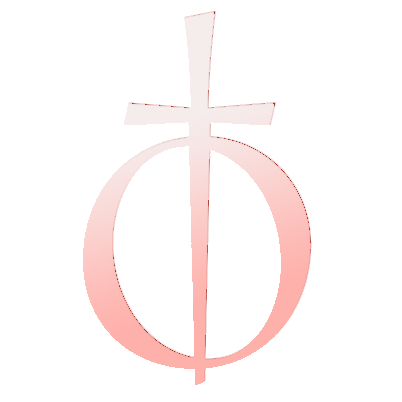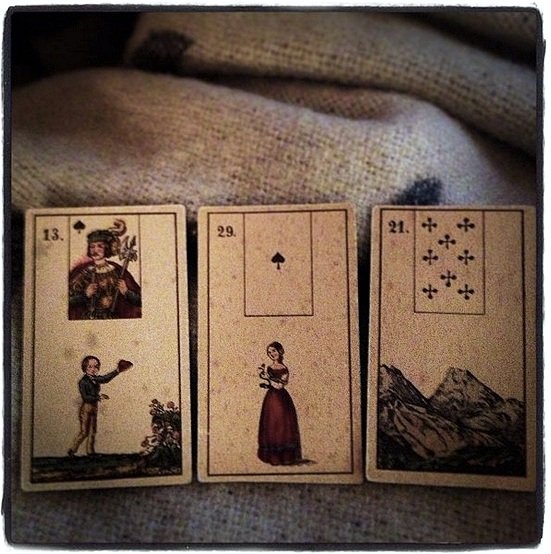Yes/no answers & major/minor cues
Yes/no questions are always a favorite among people who seek philosophizing with a hammer. Here’s what I often do when I have to answer quick yes/no questions.
I mostly perform a three-card reading because I like to see a synthesis emerging. The 5-card draw can punctuate a snappy answer in a more nuanced way.
The pattern recognition that I’m after, however, does not rely so much on doing arithmetics of the kind that I often hear others do: ‘if you get 2 negative cards the answer is no, if you get two positive cards the answer is yes,’ adding some variation on the order in which the positives and the negatives fall.
A simple method is to think of the ‘positive’ cards as being ‘charged’ with a major power, while the ‘negative’ cards as being ‘charged’ with a minor power.
The big ones eat the small ones
Now, of course, while some may argue that seeing the Scythe slashing a Heart may be a major issue, the truth of the matter is that the Scythe itself doesn’t care about what you think. For the Scythe your heartbreak is a bagatelle.
Here’s a series of suggestions, inspired by actual yes/no questions that people pose.
The cards are, of course, drawn at random, following the topic in question. Let’s look at a few examples.
Mice, House, Star
Q: Is my mortgage too high?
A: No, you speculate too much; major thing for you (Mice + House), minor thing for the bank (House + Star).
Clover, Moon, Ship
Q: Does he still love me?
A: It’s a tall tale that he tells himself; major thing for you (Moon + Ship), minor thing for him (Clover + Ship).
Child, Woman, Mountain
Q: Will the children pester me?
A: Yes, heavily; minor thing for them (Child + Woman), major thing for you (Woman + Mountain).
Mice, Moon, Man
Q: Is my life boring?
A: Yes, you consume yourself with small and grand illusions. Make up your mind; major thing for you (Moon + Man), minor thing for the suckers of the limelight (Mice + Moon).
Clouds, Tower, Book
Q: Can I defeat my enemy?
A: Yes. You watch the atmosphere closely from your lighthouse and put a spell on him, the King of Clubs; major thing for him (Clouds + Tower), minor thing for you (Tower + Book).
Try hammering on your own yes/no questions in this way, or, if you don’t feel adventurous enough, start with reading Anne Carson’s take on majors and minors:
On Major and Minor
Major things are wind, evil, a good fighting horse, prepositions, inexhaustible love, the way people choose their king.
Minor things include dirt, the name of schools of philosophy, mood and not having a mood, appropriateness, and time.
With the Lenormand cards, as with any other oracle, take your time. Don’t fall for the idea that these cards go to the core of whatever aches you faster than the other type of cards. What gets to the core of anything fast enough is your own creative genius, not the tools you employ to activate it.
As to the top row of cards, let me reiterate what I said to a man who asked about what the best approach to learning how to read the Lenormand cards was, and whether he could do it at all.
See, since this question is in two parts actually, with one part being a yes/no question that begs for a short descriptive yes/no answer, and the other part being a question of modality. The 5-card draw here answers both the man’s ‘how to’ and ‘can I’ questions.
I said the following upon seeing the cards of the Man, the Flowers, the Star, the Key and the Lily: ‘think of approaching learning how to read the Lenormand cards as an act of gathering wild flowers in the morning, flowers that still have some dew on them. This freshness will be the key to how you can end up cultivating the more serious flower, the one that takes time and careful attention to grow. Pick the colorful bits and pieces on your path, but then learn the art of distinction. Mere ephemeral learning is a minor thing of no consequence. What makes an impact is the long term investment, a major thing required by mastery. Keep picking fresh flowers, but start digging the more solid contributions, the ones that stand as clear as the most beautiful white lily you’ve ever seen.
Cards: The Lenormand Oracle by Erwin Kohlmann / Oswin Volkamer, Verlag fur die Frau, Leipzig 1982.
*
The longer take
Along with the snappy reading, you may want the longer take. Here’s my book on the Lenormand cards.







